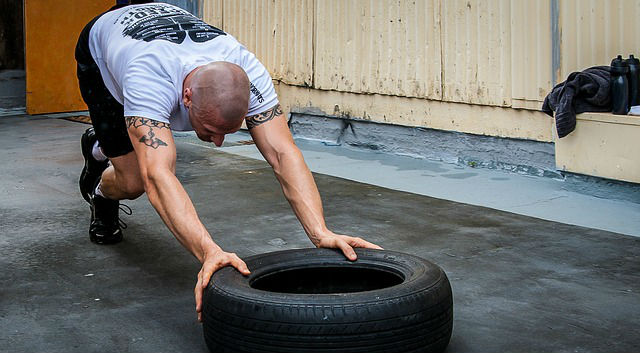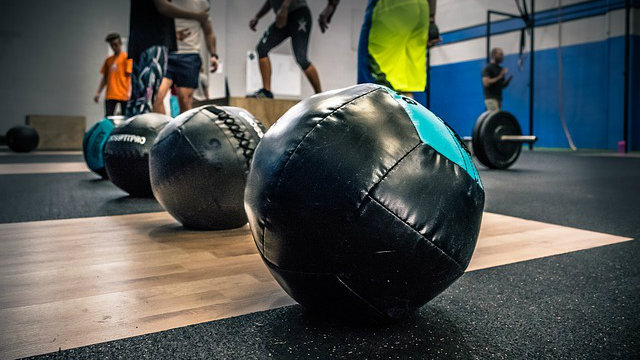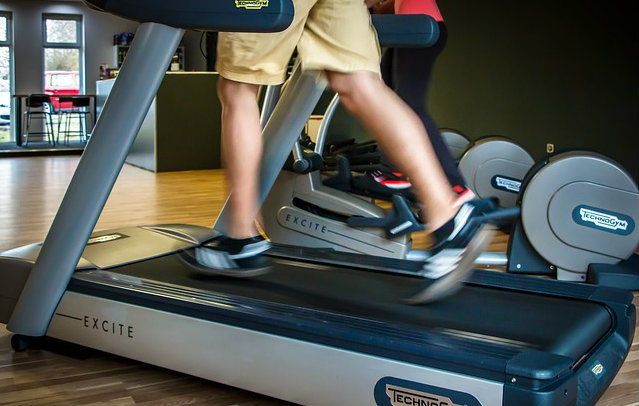 Reading Time: 5 minutes
Reading Time: 5 minutesIf you’ve made the decision to commit to a consistent workout program, then you’ve already taken a huge step toward improving your health. And no matter your specific goals — fat loss, disease prevention or reversal, improved athletic performance, or strength gains — adding interval training into your exercise routine can make a huge difference.
Read on to learn more about this fitness methodology and how you can start incorporating these types of workouts more frequently into your training.
What Is High Intensity Interval Training (HIIT)?
High intensity interval training, known as HIIT, is a broad type of physical activity characterized by short bursts of intense exercise followed by planned rest periods. Read: all-out, 100% effort for anything ranging from ten seconds to a few minutes, then a recovery period that can either be a full rest or lower, slower activity (such as walking).
If you think about it, our bodies actually evolved relying on this style of physical exertion. Whether we were running from predators or chasing after our food, humans needed the ability to employ this on/off regulation. These days, ask most reputable personal trainers or doctors and they will most likely say this form of exercise, along with strength training, should be a regular staple in a fitness program, from beginning levels to elite and competitive athletics.
Virtually any movement can be used as part of an interval training workout, but there are some general guidelines to follow to keep yourself safe and injury free:
- Choose movements you know you can perform correctly and safely. Because you’ll be moving fast and breathing hard, you may be putting yourself at increased risk of injury if you try to hit a HIIT workout with unfamiliar movements.
- Remember to warm up and cool down properly to further promote injury prevention and maximize the healthy benefits. Ideally, you want your pulse already elevated a bit before you start your HIIT workout.
- Some favorite interval-friendly movements that require little to no equipment include burpees, mountain climbers, sit-ups, push-ups, ring rows, dips, squats, jumping lunges, step-ups, and running sprints — but the list goes on and on!
Why Interval Training Is So Good for You
Studies have shown that interval training offers an impressive number of benefits. Specifically, HIIT workouts have been shown to:
- Help you burn more calories during your workout
- Help you burn more calories even after you stop working out (known as the “afterburn effect” or “excess postexercise oxygen consumption” if you want to go full-science)
- Improve your body composition
- Improve your cardiovascular health
- Reduce your risk of type 2 diabetes
- Build muscular endurance, especially in beginner- to intermediate-level trainees
An added plus to HIIT-style workouts? They are incredibly convenient, easy to do anywhere, and often don’t require any equipment at all. This is super helpful for those of us who struggle to carve enough time from our busy schedules to get into the gym. Even in as little as four or five minutes, you can get a full-body and super challenging workout done — without leaving the comfort of your own home.
The psychological benefits of tough exercise is also worth considering. By completing a challenging HIIT workout, you gain confidence and prime yourself to keep putting in the work on a consistent basis — no excuses necessary.
2 Ways To Get Interval Training Into Your Workouts
Try one of these interval templates the next time you’re looking for a quick and effective workout, whether in the gym, at home, or on the road:
- Tabata: Developed by a Japanese doctor named Dr. Izumi Tabata, this protocol involves twenty seconds of intense exercise, followed by ten seconds of rest, repeated eight times. That comes to a grand total of four minutes of butt-kicking effort. Feel free to repeat the cycle more than eight times for a longer work output, but keep in mind that when it comes to interval training, the most effective method is “short and sweet.” Too long and your intensity level starts to drop, which may limit your gains.
- AMRAP: This stands for “as many rounds as possible” that can be completed in a given time period. For example, you can perform a short circuit involving 5 ring rows, 5 push-ups, and 10 squats for two minutes, moving as quickly as possible and performing as many (quality) repetitions as you can. Then, rest for two minutes. Repeat this cycle for three rounds (that’s a total of six minutes of work). Record the total number of reps you complete, then try to beat that number in the future.
Even if you’re guilty of “chronic cardio,” you can easily spice up your treadmill or elliptical routine by adding in some sprint intervals. For instance, if a typical cardio workout for you takes about twenty minutes, add in fifteen or thirty seconds of an all-out sprint once every couple minutes. You’ll be amazed at how much more spent you feel afterward.
A Fun and Simple Interval Workout You Can Do Anywhere
You’ve got four minutes to spare, right? Warm up a bit and then give this Tabata workout a go:
- Do as many burpees as you can for 20 seconds. (Click here for a burpee tutorial — do not succumb to the flop!)
- When the 20 seconds is up, rest for 10 seconds.
- Repeat 8 times.
- Drink water. Feel exhausted. Then, feel awesome!












